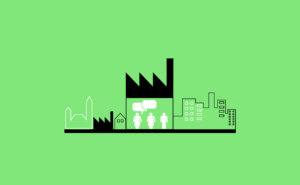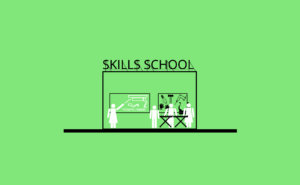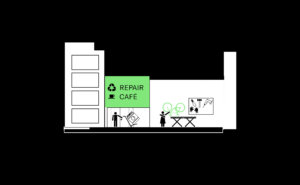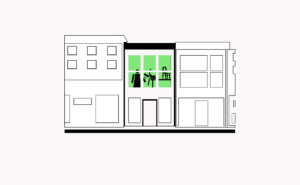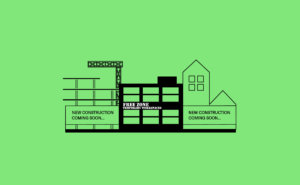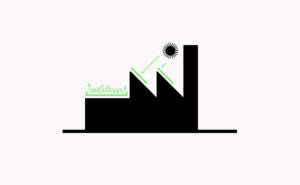
N.3 Mixing Complementary Making and Related Services
Mixing complementary manufacturing with related activities creates conditions for efficient work flows and provides opportunities for resource and knowledge synergies through cross-sectoral innovation.
[Context] Many new forms of manufacturing grow out of environments where the sector is already thriving, where a network of suppliers and producers are established. Small to medium sized businesses in particular depend on a vast range of formal and informal relationships with other complementary businesses, service providers and material distributors. Proximity builds trust upon which relationships and projects can be developed. Having complementary makers and related services means that businesses can specialise while also working together to deal with mutually beneficial issues (such as waste or staffing). This also provides businesses with a wider pool of skilled labour and knowledge without having to employ them directly. An ecosystem of complementary making and related services is heavily scale dependent. Within a mixed manufacturing area there could be clusters of sectors (such as health, food, etc). The dynamics of specialisation and diversification are extremely important and not necessarily contradictory. Mutually beneficial spillover effects may emerge such as cross-sectoral learning and innovation.
[Problem] Very little is known about how businesses interact and depend on each other as relationships and knowledge exchange can be informal and invisible beyond the working environment. Policy and planning traditionally split manufacturing into separate activities without recognising the way businesses support or depend on each other. Mapping can be done through cross-sector VAT exchanges, but this only shows exchange of finance between businesses and not the interchange of knowledge or skills. Knowledge must go beyond statistics to fully capture network interactions between making and related services and requires an understanding of industrial networks. Businesses needs are not often evident to policymakers and planners, while businesses themselves may not necessarily know what public support is available or could be of use to their business. Public authorities rarely have the energy or resources to learn about the network of informal business relationships. As a result there is a large gap between what policy makers know about industrial areas and what they offer to support or boost businesses. Furthermore, when industrial areas or mixed use zones become under threat of gentrification, there is very little knowledge of how the loss of a few key businesses could affect a network of related businesses.
[Forces] Cities that are interested in stimulating or protecting a manufacturing district, will be faced with the question of how to provide support. Is it more effective to sustain complementary and related services or to focus on one sector by N.4 Clustering Similar Making? This question can be highly politicised as it can be much easier for a public administration to back a well organised sector with many employees (such as the auto industry) than a wide field of smaller businesses with many different needs. Yet backing a single sector will likely lead to far smaller net benefits to society than supporting a complex network of interrelated businesses (SMEs). R.2 Transparent Making would help policy makers and industry lobbies to better understand how businesses relate, at least financially, however many businesses will be reluctant to share information about how their business operates. A community manager, such as a local R.3 Curator, could be a sensible conduit to connect businesses’ needs and public support, so long as this actor remains objective and uncorrupted. Sensitive protection measures are required to ensure that community interests are prioritised.
[Solution] Develop a complex manufacturing network by actively linking complementary business and services, facilitating exchanges of technology, creating synergies and collaborating on complex projects. Where possible nurture opportunities for industrial symbiosis and circular use of resources in line with N.2 Re-use of Materials and Energy Flows. A local R.3 Curator or a trusted community leader is essential to represent general interests, help build relationships while learning about how businesses work and how they can be supported. Such a role is more likely to gain traction and relevance if grown out of the community’s needs rather than subcontracted to a professional real estate agency. The curator could also help with matchmaking between businesses to share equipment, resources, space and personnel through P.2 Shared Technology & Making Spaces and with R.6 Sustainable Product Cycles. The curator could be publicly financed (through taxes) or independently through business contributions. R.2 Transparent Making and a R.12 Material Database, while challenging to enact, can be a helpful means of communicating how complementary making and related services interact. Informal relationships can be built through spatial interactions such as a B.1 Making Around Courtyards or a P.8 Community Hub in Making Locations. Communities of makers can pool needs such as a N.6 Centralised Logistics Zone and P.7 Spaces for Development & Education.
[Contribution] Add contributions here.
